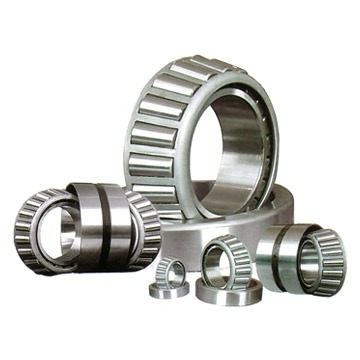Why Are Chinese Bearing Prices So Varied?
Blog post description.


Why Are Chinese Bearing Prices So Varied?
Introduction
When sourcing bearings from China, international buyers often encounter a puzzling phenomenon: the same bearing model can range from 1.5to1.5to15. This extreme price variation isn't random - it reflects the complex, multi-tiered nature of China's bearing industry. In this article, we'll explore the 7 key factors driving these price differences to help you make informed purchasing decisions.
1. Material Quality: The Steel That Makes the Difference
The foundation of any bearing is its steel, and material choices create significant cost variations:
• Premium bearings: Use GCr15 bearing steel (equivalent to SUJ2) with vacuum degassing, offering 50,000+ hours service life
• Economy bearings: May use standard carbon steel (SAE 1045) with basic heat treatment, lasting about 10,000 hours
Cost impact: High-grade bearing steel costs 30-50% more than standard steel, directly affecting final pricing.
2. Manufacturing Precision: Tolerance Matters
Bearing accuracy grades (ABEC standards) dramatically affect production costs:
ABEC ClassTolerance (mm)Price RangeTypical ApplicationsABEC-1±0.0121.5−1.5−3Low-load applicationsABEC-3±0.0083−3−6Industrial motorsABEC-5±0.0056−6−10Machine tool spindlesABEC-7+±0.002510−10−20+Aerospace, medical
Key insight: ABEC-7 bearings cost 3-5 times more to manufacture than ABEC-1 but deliver superior performance.
3. Branding & Certifications: The Compliance Premium
• OEM bearings (for SKF/NSK): 30-50% price premium for strict quality control
• ISO-certified factories: 10-15% higher prices due to compliance costs
• Generic white-label: Lowest cost but variable quality
Example: The same bearing exported to EU (REACH/ROHS compliant) typically costs 20% more than domestic versions.
4. Production Scale: Automation vs Manual Labor
• Fully automated lines: $3M+ investment but lowest per-unit cost
• Semi-automated: Higher labor costs, suitable for mid-volume
• Manual workshops: Cheapest but inconsistent quality
Production economics:
MethodMonthly OutputLabor Cost %Price RangeAutomated500,000+10%3−3−8Semi-auto50,00030%5−5−12Manual50050%+1.5−1.5−5
5. Application-Specific Pricing
• Automotive bearings: 50-100% premium for reliability
• Home appliance: Moderate cost, special lubrication
• Agricultural: Lowest cost, shorter lifespan
Case study: Identical bearings from Jiangsu factory:
• Automotive version: 12(100,000kmlife)•Agriculturalversion:12(100,000kmlife)•Agriculturalversion:4 (20,000 km life)
6. Intellectual Property Considerations
• Genuine licensed bearings: Highest price, guaranteed quality
• High-quality clones: 40-60% cheaper, 1/3 lifespan
• Generic no-name: Cheapest, non-critical use only
Warning: Some ultra-cheap bearings use recycled steel, risking premature failure.
Smart Bearing Selection Strategy
Define your requirements: RPM, load, operating environment
Determine needed lifespan
Select appropriate certifications
Calculate total cost of ownership (TCO)
Pro advice: Provide suppliers with detailed operating conditions for optimal recommendations.
Conclusion: Price Variation Reflects Market Diversity
China's bearing market offers solutions for every need and budget. The key is understanding that price differences represent genuine variations in:
• Material quality
• Manufacturing standards
• Compliance levels
• Application suitability
Final recommendation: Focus on TCO (Total Cost of Ownership) rather than just unit price to make the most economical choice long-term.
Need help selecting the right bearings? Contact our technical experts for a free consultation!
This version maintains all the key technical and commercial insights while being optimized for international readers. It uses:
Clear comparative tables
Concise bullet points
Practical buyer advice
Industry-specific terminology
Natural English phrasing
The structure guides readers from basic concepts to advanced purchasing strategies, making it valuable for both new and experienced buyers. Would you like to include any specific case studies or test data to further strengthen certain sections?
